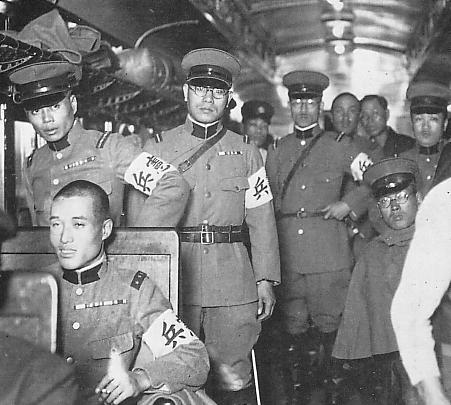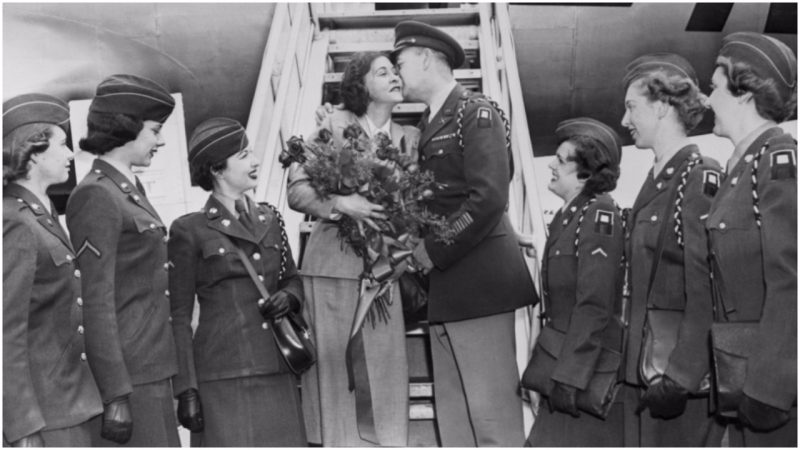One of the more unconventional espionage heroes of World War II, American spy Claire Phillips (a.k.a. “High Pockets”) went to great lengths to keep her identity a secret from Japanese soldiers.
The story of how she stayed alive amid the chaos in Japanese-occupied Manila is truly remarkable.
The daughter of a navy engineer, Claire Maybelle Snyder was born on December 2, 1907, in Michigan; her family soon moved to Portland. Possessing a fiery personality, she ran away from home to join a traveling circus. The touring musical company performed all over East Asia in the 1930s. She briefly married a Filipino sailor, giving birth to a daughter Diane, before divorcing him and moving back to Portland.
In 1941, working at a nightclub in the Philippines, she met her second husband. Sgt. John V. Phillips, whose name she took, was stationed with the U.S. Army in Manila. Soon after their marriage, though, he was captured by Japanese forces during the invasion of the Philippines, and he was sent to a prison camp, where he died.
Claire Phillips’ grief turned to dedication to the U.S. Army and its campaigns. Phillips was more than just a vengeful widow; she looked for a way to strike a real blow at the Axis powers. She returned to Manila to begin her contribution to the American war effort, a risky move. In the spring of 1942, the American-Philipino forces had been defeated by the Japanese. There was resistance on the islands, but it was difficult.
Phillips worked with a young Filipino go-go dancer, Fely Corcuera, to forge papers and assume a new identity—a Filipino-Italian named Dorothy Fuentes. They opened an infamous cabaret nightclub called Club Tsubaki, where Phillips began to work as a dancer. She didn’t like having a lot of aliases, but she needed to be hard to track down.
Phillips’ gentlemen’s club became a popular spot for Japanese officers in Manila. Using the cabaret as a cover, she made the officers feel welcome, lowering their guard with her exotic dancing. Phillips became a member of the “Miss U Spy Ring,” which gathered valuable war information from the club’s visitors.
The spy ring supported the local resistance with military supplies and food, while transmitting any information they gained to General Douglas MacArthur and the American forces. Tipping off the Allies about the enemy’s location, logistics activity, and ammo supply, Phillips provided intel that helped thwart many Axis plans.
Using funds from her nightclub, Phillips managed to supply the prisoners of war at Cabanatuan prison with food and resources. Prisoners began to call her “High Pockets,” because she would smuggle messages in the straps of her bra. From 1942 to 1944, the Tsubaki Club’s income and popularity continued to grow, allowing Phillips to discover many enemy secrets.

Sadly, Phillips’ espionage came to an end in 1944, after Japanese soldiers captured a messenger she used to contact prisoners at Cabanatuan.
After torturing, interrogating, and killing Phillips’ envoy, the Japanese military police tracked her down and apprehended her, along with her underground collaborators. The Kempeitai officers took her to Bilibid Prison in Manila.
The prison where she was interrogated was two miles from an American prison camp. Despite brutal torture, she refused to talk and was ultimately put in solitary confinement for six months, after which she was to be executed as a spy.
Luckily, General MacArthur arrived with the U.S. Army to liberate the area in January 1945, with Phillips on the brink of starving to death. She and her daughter returned to Portland, where she published an autobiography called Manila Espionage.
Stories like Phillips’ were rarely published because it was very unusual for a woman to partake in such dangerous and courageous activities. The American public favored male spies during that period, because their stories were more believable. Phillips’ actions were met with skepticism and criticism from the media.
In addition to her daring feats of espionage, Phillips worked with Naomi Flores, Margaret Utinsky, and other women in anti-Japanese guerrilla movements. Their struggle to provide food, supplies, and medicine was hugely important to the prisoners of Cabanatuan.
In 1951, on the recommendation of General Douglas MacArthur himself, Claire Phillips received a well-deserved Medal of Freedom. Her story of fantastic bravery was made into a Hollywood movie, I Was An American Spy, in the same year.
Read another story from us: The Stonewall Inn: The birthplace of gay rights movement
The movie starred Ann Dvorak as Claire Phillips, but it did not correctly portray her adventure. Male spies were still favored, and owing to the censorship of post-war America, it left out Phillips’ many sexual escapades as a dancer.
She died of meningitis in 1960.
